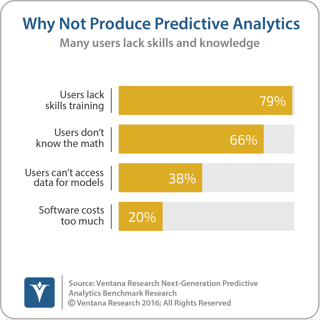IBM recently held its inaugural World of Watson event. Formerly known as IBM Insight, and prior to that IBM Information on Demand, the annual event, attended by 17,000 people this year, showcases IBM’s data and analytics and the broader IBM efforts in cognitive computing. The theme for the event, as you might guess, was the Watson family of cognitive computing products. I, for one, was glad to spend more time getting to know the Watson product line, and I’d like to share some of my observations from the event.
Perhaps you, too, are a little confused about IBM’s modern family of Watson. There are many parts. IBM Watson gained significant notoriety, which I wrote about in 2011 when it defeated two champions on the Jeopardy television quiz show. Since then, IBM has been developing and introducing a number of products under the Watson brand including IBM Watson Analytics and IBM Watson Data Platform, which it announced at the World of Watson.
The core of Watson is a set of cognitive computing capabilities. My colleague Mark Smith first covered IBM’s efforts to create a cognitive computing category many years ago. These cognitive capabilities have been packaged into a set of cloud-based services for creating cognitive applications. Today many of these services provide language processing to automate the process of conversing with users of the system. For example, these services include natural-language processing, translation of speech to text (as well as text to speech) and sentiment analysis to determine the tone of a conversation.
The cloud-based Watson Analytics services us the cognitive capabilities of Watson with business intelligence and analytics. There are three elements to Watson Analytics: data, discover and display. The data capabilities enable users to connect to a variety of data sources. Discover helps them navigate through the data and, using cognitive capabilities, provides natural-language query, automates predictive analytics and recommends visualizations to speed the discovery process. The display features include dashboards for sharing and interacting with data. These dashboards can also be organized into storybooks for guided analytics. There are still gaps between Watson Analytics and Cognos Analytics, which IBM needs to address over time. Watson Analytics is not a replacement for Cognos Analytics, but it does bring more sophistication to IBM for its analytics efforts.
The Watson Data Platform, known as Project DataWorks during its development, combines cloud-based data management services with Apache Spark-based machine learning to help automate the building of models from both structured and unstructured data. Such automation could be helpful to many organizations. Our next-generation predictive analytics benchmark research shows that 79 percent of users don’t have the skills needed and 66 percent don’t understand the mathematics involved in building models. Watson Data Platform supports a variety of data management services including relational databases, Hadoop, document stores and graph databases. IBM has incorporated support for SQL, Python, R, Java and Scala into the Watson Data Platform and plans to add support for more languages.
services including relational databases, Hadoop, document stores and graph databases. IBM has incorporated support for SQL, Python, R, Java and Scala into the Watson Data Platform and plans to add support for more languages.
The first commercial application of Watson was in the healthcare market, a joint effort between WellPoint (now Anthem) and IBM. Watson healthcare applications have advanced significantly with specialized applications for genomics, oncology, population health management, care management and imaging solutions. Its healthcare capabilities have advanced to the point where they were featured in a segment on CBS 60 Minutes television program. Beyond healthcare, there are now Watson applications for commerce, education, financial services, human resources, the Internet of Things (IoT), marketing and the supply chain as well as third-party applications.
Watson’s victory on Jeopardy created broad market awareness of predictive analytics. The World of Watson furthered that message with high-profile speakers on the main stage talking about how they are using Watson in their businesses. For example, Mary Barra, chair and CEO of General Motors, described how Watson is being used to create OnStar Go, which will deliver personalized content to drivers in their automobiles. Yitzhak Peterburg, chairman of Teva Pharmaceuticals, explained how Watson is being used in drug development and chronic disease management processes. Grammy–winning producer Alex Da Kid described how Watson was used to help create the song “Not Easy.”
As IBM delivered its cognitive computing message to the World of Watson audience, speakers made a clever variation on the term “AI”. Although the acronym typically means “artificial intelligence,” IBM emphasized the use of Watson for “augmented intelligence” to assist people in doing their jobs rather than replacing them. My colleague Robert Kugel has written about one example of augmented intelligence, in which Watson can be used to assist in financial compliance processes. Given the concerns in the market about AI replacing people’s jobs and the limitations on today’s technology, I think this is both an accurate representation and a message that will be welcomed by IBM’s customers and prospects.
Overall, the World of Watson event reinforced the cognitive computing message IBM has been taking to market for several years. IBM backed up that message this year with practical business applications of the technology and further refinements of the Watson product family. The expanded product line makes it easier to understand and consider applications within one’s own organization because it offers more specific packaging of those capabilities. It is worth understanding what IBM Watson offers as organizations consider their requirements for the next generation of data and analytics.
Regards,
David Menninger
SVP & Research Director
Follow Me on Twitter @dmenningerVR and Connect with me on LinkedIn.











